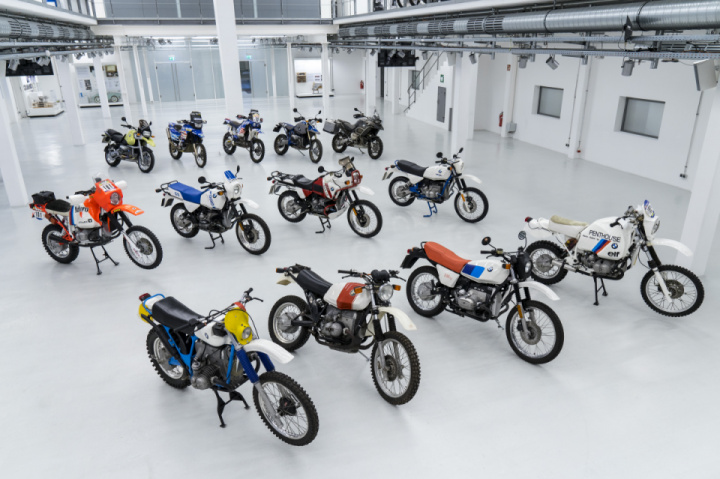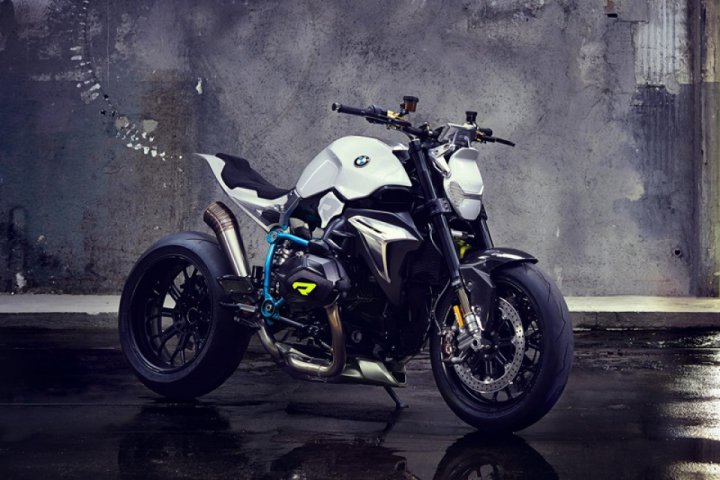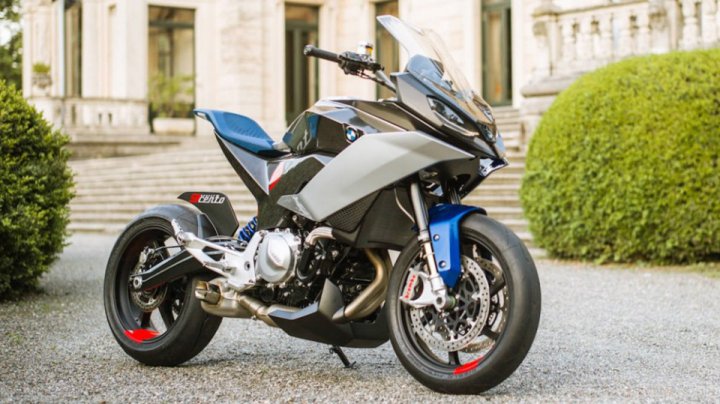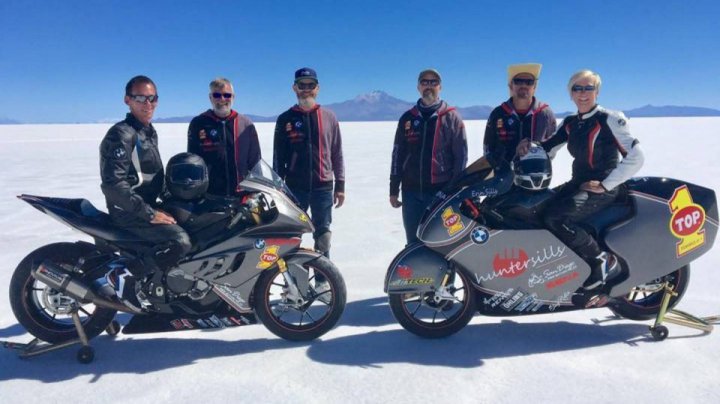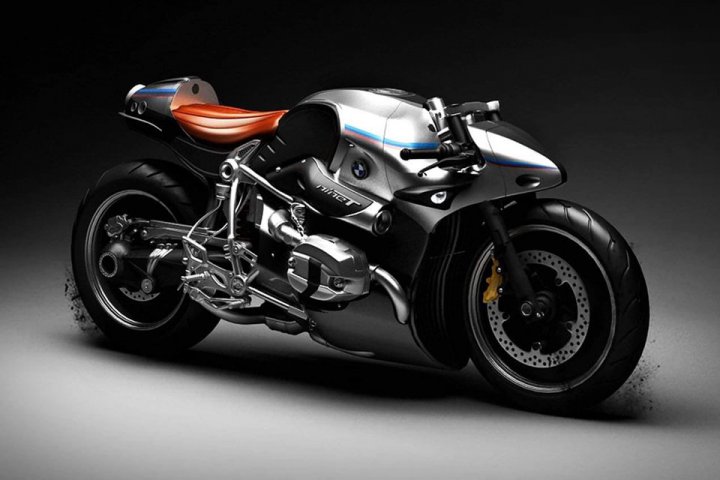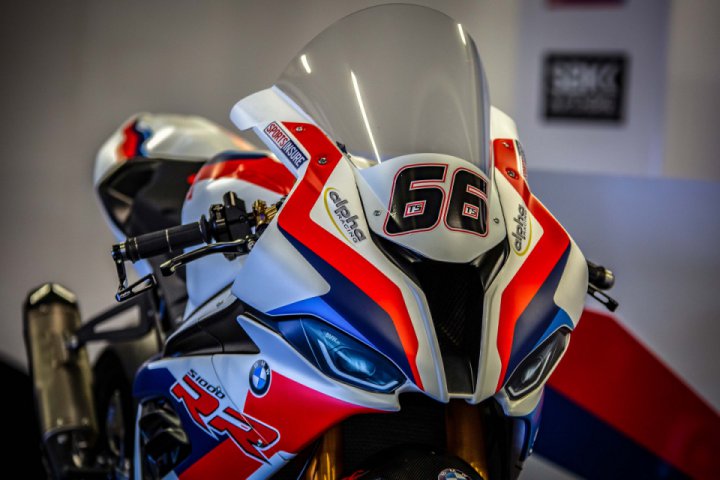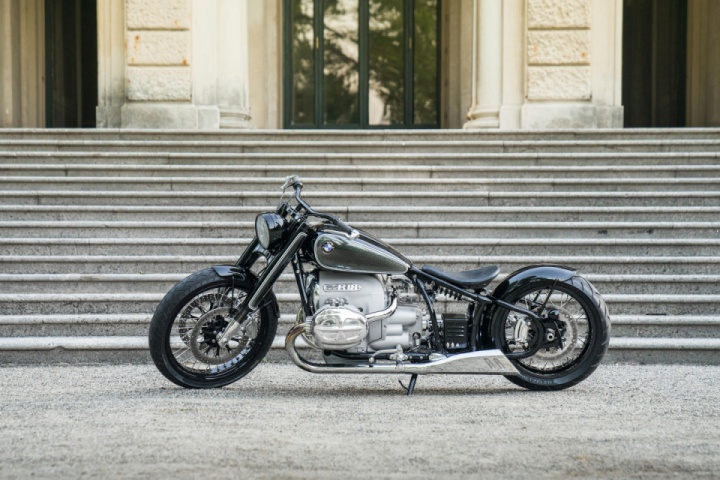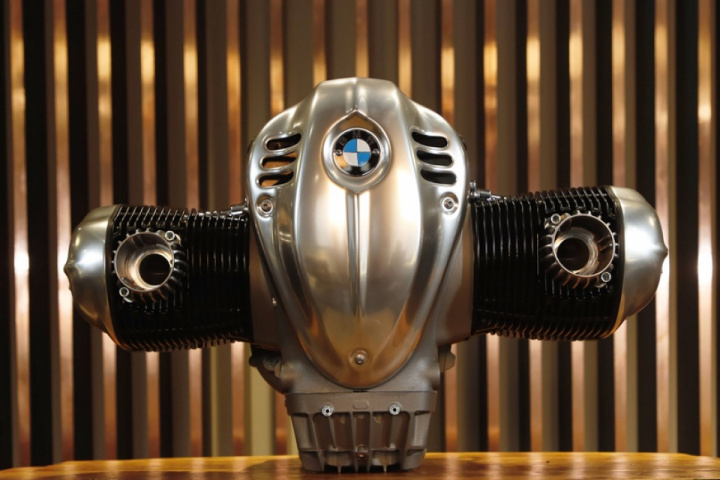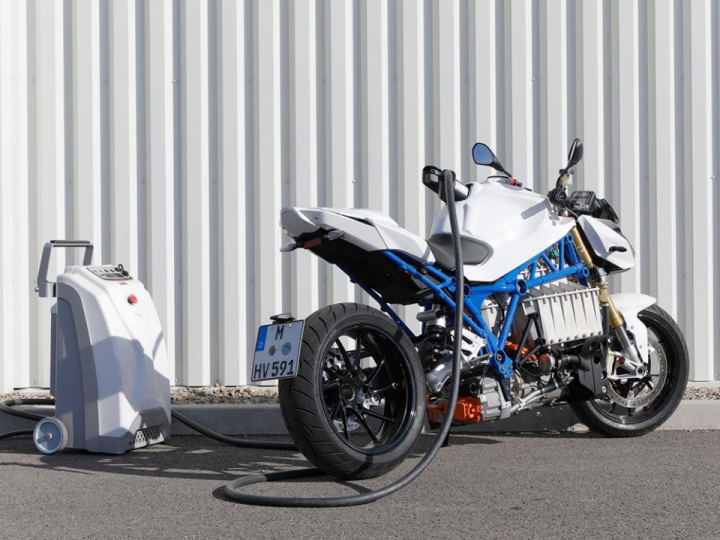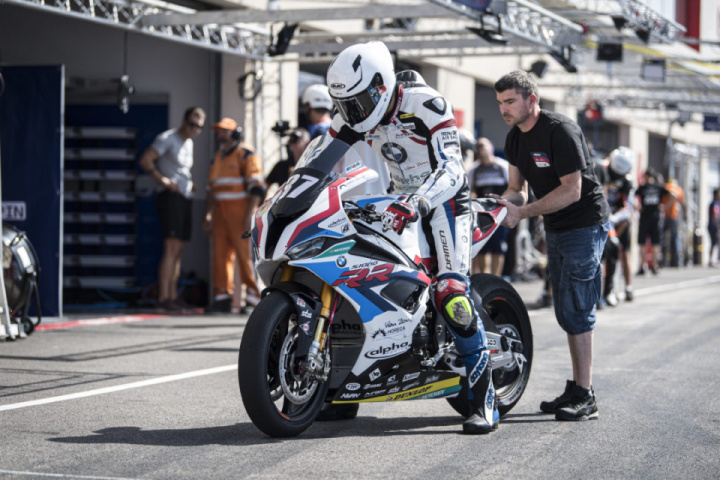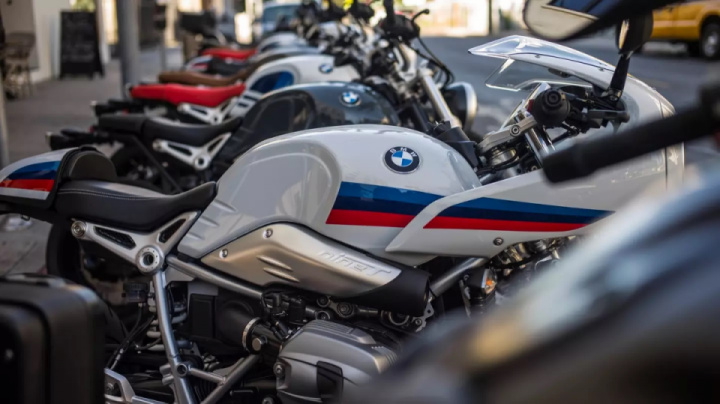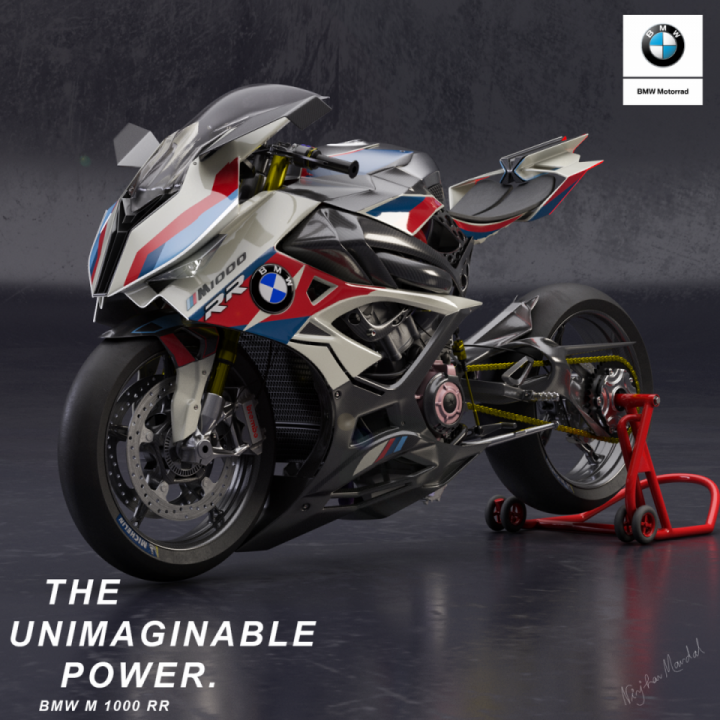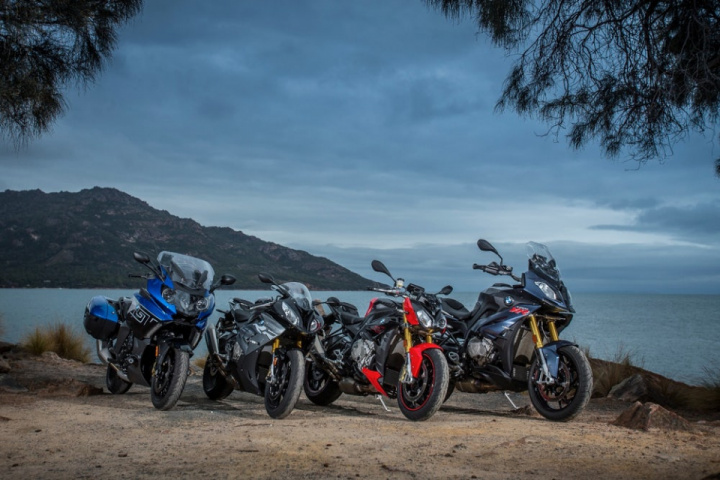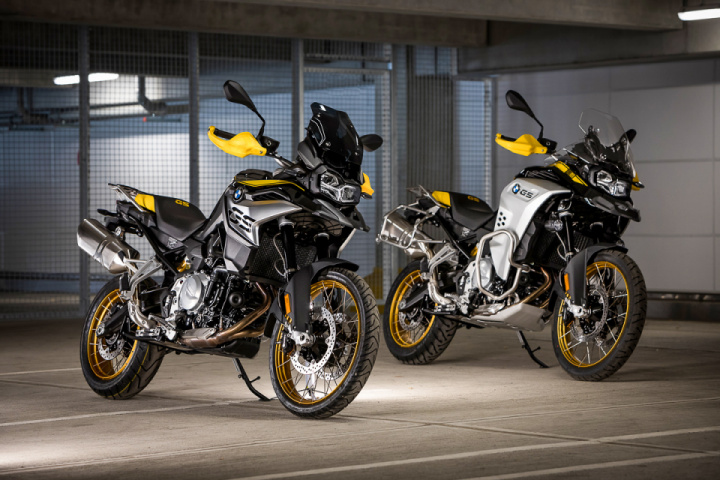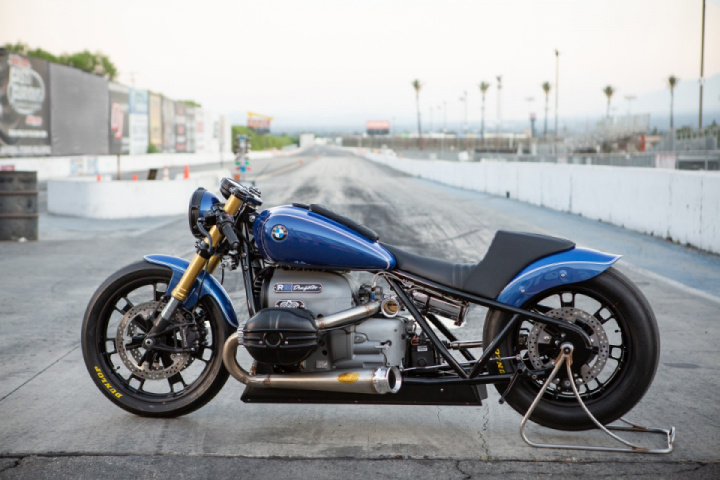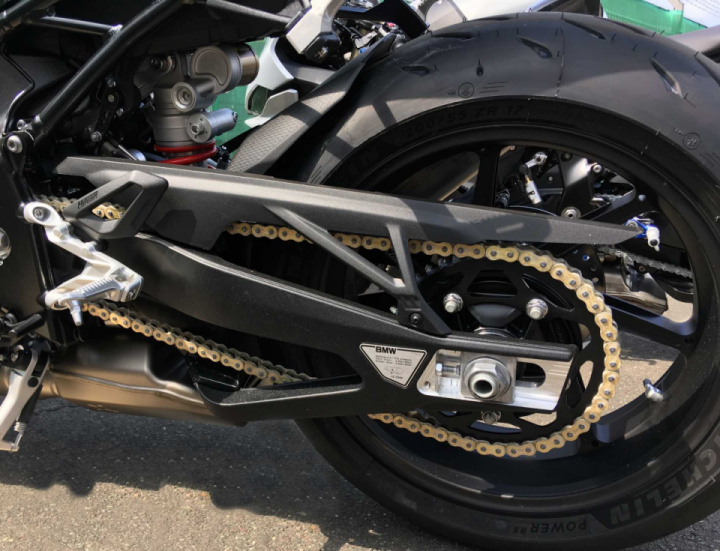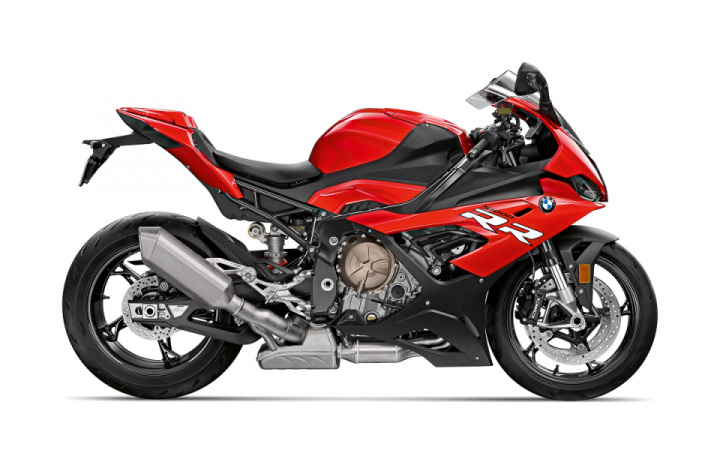
-
 T-shirt "Transformer" inspired by Kawasaki Ninja 300
T-shirt "Transformer" inspired by Kawasaki Ninja 300 -
 T-shirt Suzuki GSXR 1000 "Bird"
T-shirt Suzuki GSXR 1000 "Bird" -
 Mug Yamaha YZF R6 “Scorpio” 17-20
Mug Yamaha YZF R6 “Scorpio” 17-20 -
 Hoodie Honda Grom MSX125 "Robot"
Hoodie Honda Grom MSX125 "Robot" -
 T-shirt Ducati V4 V4S Speciale "Bull"
T-shirt Ducati V4 V4S Speciale "Bull" -
 BMW R1250GS T-Rex Motorcycle Poster
BMW R1250GS T-Rex Motorcycle Poster -
 T-shirt Triumph Daytona 675 "Dragon"
T-shirt Triumph Daytona 675 "Dragon" -
 Mug BMW R1250GS Adventure T-Rex
Mug BMW R1250GS Adventure T-Rex -
 Mug BMW R1200GS Adventure T-Rex | 2014-2018
Mug BMW R1200GS Adventure T-Rex | 2014-2018 -
 Set of 3 stickers Yamaha YZF R1 “Bee” 9-14
Set of 3 stickers Yamaha YZF R1 “Bee” 9-14
A motorcycle concept that is as legendary as it is sophisticated will celebrate its anniversary in 2020: The BMW GS models are turning 40.
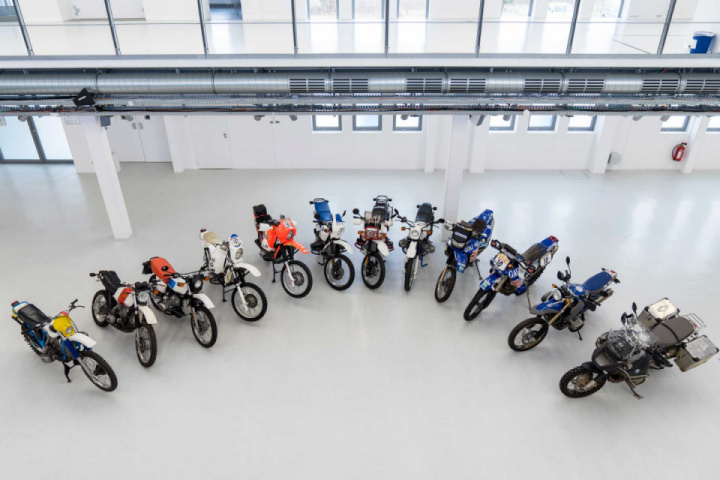
Munich. A motorcycle concept that is as legendary as it is sophisticated will celebrate its anniversary in 2020: The BMW GS models are turning 40. In autumn 1980 BMW Motorrad presented the R 80 G/S, a motorcycle which combined two very special areas of riding for the first time: Off-road and on-road. Thanks to its unique combination of road, touring and off-road capability - without compromising on everyday use - the R 80 G/S became the conceptual forerunner of the new motorcycle category of touring enduros created by BMW Motorrad. And what is more: The BMW GS models became the perfect synonym for the perfect partner on two wheels to explore even the most remote corners of our planet. To date, BMW Motorrad has been able to hand over more than 1.2 million BMW GS models to customers.
Legendary BMW GS talents: Riding dynamics, off-road mastery, comfort and robustness.
But it wasn't just motorcycle adventures that were ideally suited for the BMW GS right from the outset; the R 80 G/S and its descendants also quickly proved their qualities in racing. In 1981 Hubert Auriol rode to victory in the equally prestigious and challenging Paris - Dakar Rally. This is just one of the many motorsport successes that BMW Motorrad was able to celebrate with a GS. The outstanding talents of the boxer GS models - riding dynamics, off-road mastery, comfort and robustness - have been continuously maintained and developed by BMW Motorrad over the past 40 years and successfully transferred to other BMW Motorrad model series. In 1993, the F 650 "Funduro" was the first single-cylinder BMW enduro to come onto the market. While this bike drew its riding dynamics from its low weight and the thrust of the 47 hp single cylinder, the changing of the guard took place simultaneously on the BMW GS models with boxer engine.
The GS as an innovation driver: Four-valve technology and Telelever.
With the BMW R 1100 GS, BMW Motorrad not only presented the first GS with a 4-valve boxer and 80 bhp output, but also trod new paths with regard to suspension technology for large touring enduros. For the first time in an enduro, the engine and gearbox acted as load-bearing elements of the chassis, making a main frame superfluous. While the BMW Paralever rear wheel suspension system had already eliminated the drive reactions of the shaft drive in the models with the two-valve boxer years earlier, the BMW engineers had now created an innovative way of guiding the front wheels using the Telelever suspension. With the pitch compensation and highly sensitive response they set new standards in this area. In addition, the new R 1100 GS was the first enduro ever to be equipped with ABS - a safety plus that is now standard equipment on all BMW motorcycles.
The GS models of the F series: GS fascination for the middle range.
In addition to numerous new and further developments, including the F 650 GS (first single-cylinder with electronic fuel injection, catalytic converter and ABS), which was manufactured in Berlin from the year 2000 onwards, the F 650 GS and F 800 GS models launched in 2007 marked another outstanding milestone in BMW GS history. With their powerful, high-torque 2-cylinder in-line engine and torsionally stiff tubular frame, they interpreted the BMW GS theme in their own, yet very typical BMW way. With these new models, BMW Motorrad not only presented the successors to the extremely successful F 650 GS with its single-cylinder engine, but at the same time expanded the enduro offer in the medium range.
Advanced DOHC boxer with two overhead camshafts.
BMW Motorrad presented another highlight in autumn 2009 with the launch of the revised BMW R 1200 GS. Now equipped with the even more free-revving DOHC boxer with two overhead camshafts per cylinder, it offered 81 kW/110 hp and even more advanced riding dynamics. In the 2010 anniversary year, BMW Motorrad paid tribute to the 30th anniversary of the GS models and their successes in both production motorcycle manufacturing and motorsport alike with the "30 Years GS" special models of the BMW R 1200 GS, R 1200 GS Adventure, F 800 GS and F 650 GS painted in the BMW Motorrad Motorsport corporate colours.
BMW Motorrad continued the success story of the GS models in autumn 2010. With the BMW G 650 GS, BMW Motorrad added another attractive member to the BMW GS family. Thanks to its slender, wiry off-road stature, the new single-cylinder enduro looked bold, light and adventurous. At the same time it clearly stood out from its competitors in terms of quality, equipment and comfort. In combination with its comparatively low weight and the reduced seat height, it was the attractive entry bike into the world of motorcycling and into the fascinating BMW GS world of experience.
The power GS: Newly designed boxer featuring vertical flow.
The dynamic development of the BMW GS theme continued unabated in the fourth decade. When BMW Motorrad presented the new R 1200 GS at Intermot in autumn 2012, interest was particularly focused on the completely redesigned engine. The air/liquid-cooled flat twin engine introduced cylinder heads featuring vertical flow; they had an integrated gearbox and a shaft drive on the left side from then on, supplemented by state-of-the-art chassis technology and electronic control systems such as ABS, traction control or semi-active chassis. With an output of 92 kW (125 hp), the new R 1200 GS also provided superior riding performance. Barely one and a half years later, in March 2014, the 500,000th BMW motorcycle of the boxer-engine GS model series rolled off the assembly line at the plant in Berlin - this was an R 1200 GS Adventure.
The GS for the capacity segment below 500 cc: the G 310 GS.
In autumn 2016, BMW Motorrad presented yet another GS model. This time it was the G 310 GS. It transferred the core qualities of a BMW GS to the engine capacity segment below 500 cc and interpreted these in its own style. Extremely compact, yet fully grown and comfortable, it opened up a whole new world of experience in its segment and became unique in the entry-level segment, above all due to its versatility. With the new R 1200 GS, BMW Motorrad expanded the GS portfolio not only with further product optimisations but also by broadening the motorcycle’s range of properties. For the first time, customers were able to give a BMW GS a more marked touch of enduro or distinguished style to suit its preferred area of use by ordering the style packages Rallye and Exclusive.
In the same year a completely different interpretation of the GS theme came on the scene: the R nineT Urban G/S. The R nineT Urban G/S drew on the genes of the very first and legendary BMW R 80 G/S of the year 1980, transporting them into the modern era with contemporary technology in the form of a classic enduro-style BMW motorcycle with boxer engine. As with the other R nineT models, the powerful, air/oil-cooled boxer engine with 81 kW (110 hp) output in combination with a six-speed transmission was installed.
New engine, new chassis: The new GS models of the F series.
In 2017 BMW Motorrad continued to write GS history with the two completely redesigned F 750 GS and F 850 GS enduro models. BMW Motorrad consistently built on the typical GS strengths in the successor models to the successful 2-cylinder F 650 GS, F 700 GS and F 800 GS motorcycles with the aim of making good things even better. As before, the GS abbreviation again represented a perfect synthesis of touring and long-distance capability combined with racing dynamics and supreme offroad performance. In short: A BMW GS is the perfect companion when it comes to discovering remote corners of the world by motorcycle. At the heart of the new development was a newly designed, powerful 2-cylinder in-line engine with two balancer shafts and 270/450 degrees ignition distance for optimised running characteristics and emotional sound. It generated 57 kW (77 hp) for the F 750 GS and 70 kW (95 hp) for the F 850 GS from 853 cc, thus providing superior drive power for both GS models.
This meant even more power, torque and efficiency for the big boxer-engined GS.
In autumn 2018, BMW Motorrad once again introduced a radical upgrade for the boxer engine of the large GS models in order to further improve power and torque yield as well as reduce fuel consumption and emission values. For this purpose, BMW ShiftCam Technology was used for the first time in the serial production of BMW Motorrad engines: this allowed valve timings and valve stroke on the intake side to be varied. In addition, the intake camshafts were designed for asynchronous opening of the two intake valves, resulting in enhanced swirl of the fresh, incoming mixture and therefore more effective combustion. Other technical changes to the engine related to the camshaft drive – now taken care of by a toothed chain (previously a roller chain) – optimised oil supply, twin-jet injection valves and a new exhaust system.
